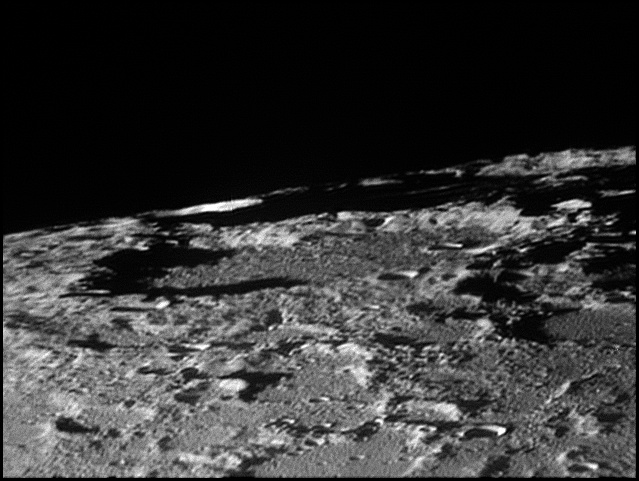image by Damian Peach
During his epic observing sessions in Jamaica last spring Damian relentlessly imaged the Moon and planets, and he is still processing the files. When this interesting image came out of the processing pipeline its identification was a mystery. Take a look, can you recognize it or see clues that would help place it? First, it is elliptical so its near the limb. Its orientation - unless the camera was rotated - is nearly horizontal, so its probably near a pole. The south pole is very rugged and this isn’t, so probably its near the north pole. This supposition is supported by the rubbly textured surface which looks like the Imbrium ejecta that we’ve seen on a recent LPOD. But its not a crater on that LPOD image or any other one. Its hard to identify because it has probably never been imaged from Earth before. The crater is Hermite, located at 86.0°N and 89.9°W and 104 km in diameter. Hermite has become famous recently because its rim is one of the few places near the North Pole that is illuminated by the Sun significantly more than 50% of each month, and hence might be a good site for a future solar power station. And part of the southern inner wall is also in permanent darkness and could hold volatiles in cold traps. Finally, do you see the bright rim beyond Hermite? It belongs to Lovelace at 106°W, whose southernwall may also harbor frozen volatiles.
Technical Details:
19 April, 2006. C14 @ F41. Lumenera Skynyx 2.0M.
Related Links:
Rükl chart 4 & I
Damian’s website
Yesterday's LPOD: More Rings Around the Moon
Tomorrow's LPOD: A Little Clavius
COMMENTS?
Register, Log in, and join in the comments.




